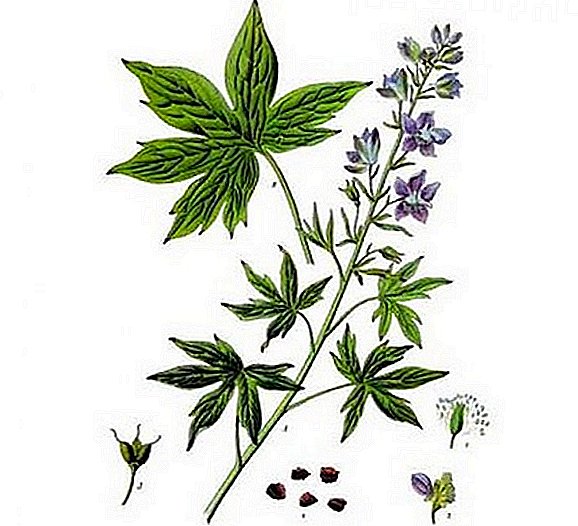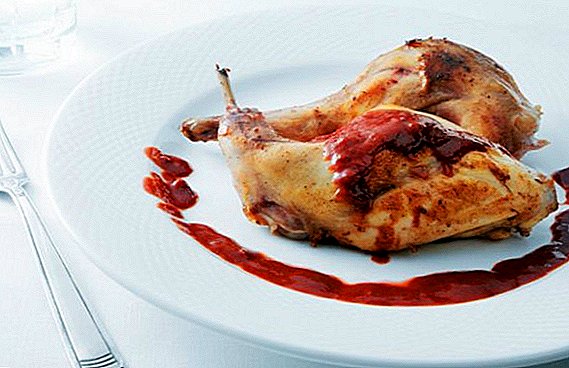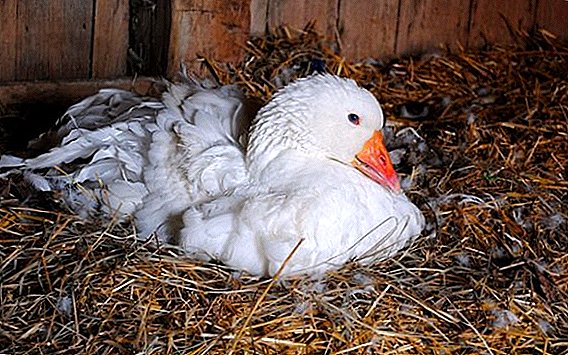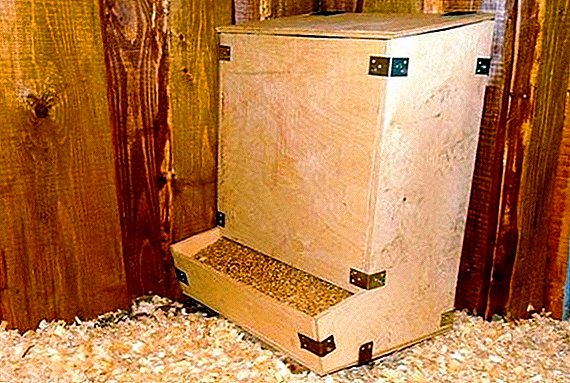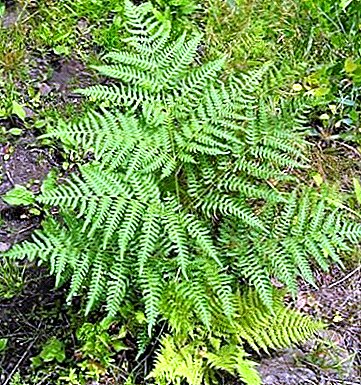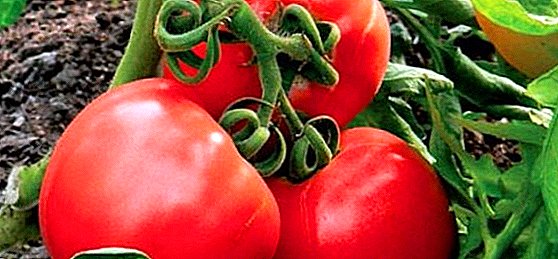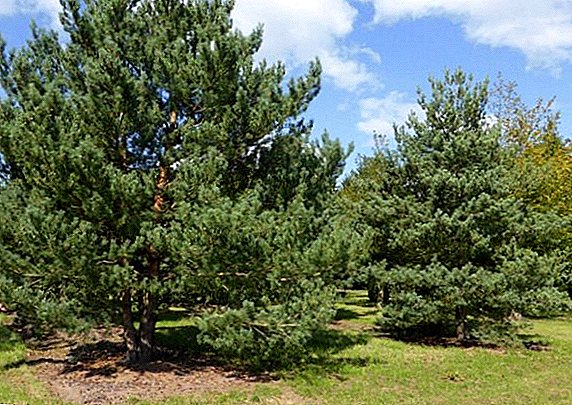 The pine forest impresses with its monumentality, a sense of constancy and inviolability of the foundations of the universe, its aspiration upwards, and the unique purity of the aura.
The pine forest impresses with its monumentality, a sense of constancy and inviolability of the foundations of the universe, its aspiration upwards, and the unique purity of the aura.
Since ancient times, these trees are considered a symbol of immortality and fertility, wisdom and spiritual help.
And if there is no forest nearby, you can plant ordinary pine in your garden.
Botanical description
Reaching a height of 40-50 m, pine is rightfully occupies an honorable place in a row of trees of the first size. The diameter of the trunk at the base reaches 100 cm. The color of the bark is heterogeneous, as is its thickness. And this fact has a logical explanation.  The thickening of the red-brown or gray coating of the trunk in the lower part of the tree has a protective function, protecting it from overheating during drought and from bottom fires.
The thickening of the red-brown or gray coating of the trunk in the lower part of the tree has a protective function, protecting it from overheating during drought and from bottom fires.
In the middle and upper parts of the trunk, deep, intricately twisted grooves disappear, turning into a practically smooth surface of a yellow-red shade, thin, with peeling plates.
Learn about the features of the cultivation of pine, as well as about the characteristics of varieties such as wemouth pine, Pine pine, cedar pine, black pine, mountain pine.In dense plantings, pines grow slender, even, with trunks peeled to a great height. And coniferous plants standing in solitude have opposite characteristics: the growth is smaller and the branches are bigger.
With age, the shape of the tree crown changes: from conical in young years to spherical in the middle period of life and flat, umbrella-shaped in old age.  The needles of Scots pine has a bluish-green color, the length of the needles is 5-8 cm. They are rather dense in structure, assembled in pairs in bunches. If deciduous trees change their decoration annually, then conifers once every three years; This usually happens in September.
The needles of Scots pine has a bluish-green color, the length of the needles is 5-8 cm. They are rather dense in structure, assembled in pairs in bunches. If deciduous trees change their decoration annually, then conifers once every three years; This usually happens in September.
Pine prefers sandy soil, but can adapt to any conditions for growth due to its root system, which is capable of being modified. In arid lands or deep groundwater, taproot is rapidly developing, which can reach 6 m.
Soils saturated with moisture cause the appearance of a well-branched surface root system.
Striking perfect undemanding to climatic circumstances. This tree grows quietly in the Arctic and in Kazakhstan, stoically enduring both frost and heat. The life of this representative conifers on average up to 200 years, but there are exceptions, living up to 400 years. 
Did you know? The most ancient tree on our planet is Methusela's pine, which is 4,842 years old. Its location is not declassified for its own safety.
Pine ordinary peculiar preparing for the winter period. In order for the needles to remain on the tree, it is covered with a special wax — evaporation through it does not occur, and the tree’s breathing stops.
This plant is often found in urban environments, although the dirty air is hard to carry, without having to clean it, as the needles for 1.5 years are covered with a layer of soot and dust, making it difficult for the pine to live.
Composition and useful properties
Coniferous beauty for thousands of years known as a powerful healer. The ancient Egyptian balms found during excavations, which included pine resin, still have not lost their bactericidal properties.  Nature has miraculously provided for the need for such helpers to treat people. The main thing is that people do not forget to use it with gratitude and care.
Nature has miraculously provided for the need for such helpers to treat people. The main thing is that people do not forget to use it with gratitude and care.
In pine needles found:
- antiscorbutic vitamin C;
- carotene, which is often called the "elixir of youth" and "source of longevity";
- vitamin K, which provides a normal level of blood clotting, prevents hemorrhages and blood loss;
- vitamins B2, D, E, R.
Find out whether honey from pine sprouts is beneficial, as well as the beneficial properties of pine cones, pine pollen, pine buds, pine bark.Pine needles, especially in winter, are saturated with:
- tannins;
- anthocyanins;
- alkaloids;
- flavonoids;
- bitter substance pinicycrine;
- paracymolum;
- coumarin;
- essential oils (bornyl acetate, limonene, camphene, otsimen, myrcene, borneol, pinene);
- trace elements (copper, iron, boron, molybdenum, zinc, manganese).

Kidney revealed:
- tannins;
- vitamin C;
- essential oil;
- naphthoquinone;
- mineral salts;
- carotene;
- rutin;
- resin.

The resin obtained from wood (resin) is found:
- essential oils;
- resin and fatty acids;
- terpenoids.

Even the bark is able to benefit - it has a large number of pigment substances anthocyanins, which are used in the composition of dyes in the food industry.
All parts of this amazing plant have beneficial properties.
Infusion of pine buds is widely used for cosmetic purposes. Rinsing them washed hair, you can prevent their loss, strengthen the roots, give them a healthy, shiny look.
Bathing with infusion of pine buds has a cleansing effect on the skin, prone to rashes and irritations.
They also recommend bathing with the addition of a train, a Tibetan lofant, juniper, lavender, lemon balm.This procedure promotes healing of wounds, removes spasm and muscle tension, nourishes the skin, is a prevention of cellulite.
In cosmetology facial skin care, pure pine buds are not used, they become components of nourishing creams, masks and herbal preparations. 
In folk medicine, shoots, buds, needles, sap, pollen and green pine cones of the first year are used, because they have a whole palette of useful properties:
- fortifying (vitamin);
- expectorant;
- annoying;
- diuretic;
- choleretic;
- antimicrobial;
- blood purifying;
- vasodilator;
- disinfectant;
- anti-inflammatory;
- anti-radiation.
And the air, saturated with resin particles and a huge amount of volatile production, can be called a natural disinfectant inhaler.  After all, it is known that people suffering from lung diseases and cardiovascular diseases feel much better in the pine forest, and sometimes can even be cured without the use of any medication.
After all, it is known that people suffering from lung diseases and cardiovascular diseases feel much better in the pine forest, and sometimes can even be cured without the use of any medication.
Landing
The most favorable time for planting pine seedlings and adapting them to a new place is either the second half of April or the first decade of October.
Such periods are due to the necessary temperature regime: in the spring the soil is already well warmed up, retaining sufficient moisture, and this autumn period allows the seedling to take root normally and prepare for winter frosts.
For a tree to develop beautifully and delight in its beauty, it is recommended to choose sunny places for it; as a last resort, light shading is permissible.  A coniferous plant planted in the shade will be depressed, its growth will slow, the crown will never impress with the density and richness of the color of the needles.
A coniferous plant planted in the shade will be depressed, its growth will slow, the crown will never impress with the density and richness of the color of the needles.
If the ground is sandy or sandy, then no special requirements are needed to prepare for planting coniferous beauties. If the soil is heavy clayey, then drainage preparation should be carried out, filling the planting pit with broken brick, slate or expanded clay not less than 20 cm.
In the case when the soil is acidic, 150 g of lime should also be added to the planting hole.
Do not rely on the "chance" in such an important moment as the choice of sapling. The prickly "baby" dug up in the near forest will not take root and will simply wither the next year. Indeed, on the roots of this plant live the necessary bacteria that die outdoors for 20 minutes.  Therefore, the most important condition for planting a pine tree is to ensure maximum closeness of the root system from exposure to air. It is necessary to purchase seedlings in specialized nurseries, in containers that ensure the viability of the root bacteria.
Therefore, the most important condition for planting a pine tree is to ensure maximum closeness of the root system from exposure to air. It is necessary to purchase seedlings in specialized nurseries, in containers that ensure the viability of the root bacteria.
Coniferous sprout should not be older than 5 years and not higher than 40 cm. These optimal sizes will allow him to settle down faster and easier in a new place.
The dimensions of the landing pit should be related to the volume of the container: to be 30 cm larger in diameter and 40 cm deeper.
It is enough to sprinkle the drainage layer with soil, but it is preferable to apply for this a soil mixture of 3 parts of sod land and 1 part of sand and peat. Coniferous beauty is not demanding on the quality of the soil and can adapt to any conditions of growth.  But before planting a young plant, 150 g of superphosphate should be added to the soil mixture so that the addiction period is faster and growth is more intense.
But before planting a young plant, 150 g of superphosphate should be added to the soil mixture so that the addiction period is faster and growth is more intense.
The seedling is extremely neat, trying not to destroy the earthen room, taken out of the container and placed in a hole.
Important! The basal neck of a young pine should be flush with the surrounding soil. In this regard, the ground in the pit before planting tamped, so that after watering, she did not subside and the neck was not below ground level.
Maybe a tree should be planted a little higher, so that even after the natural shrinkage of the soil, the root neck is at the required height, protecting it from rotting, and the sprout itself from death.
The space around the basal lump is covered with fertile soil and compacted. Then, so that water does not flow out, a well is formed for watering. Coniferous beauties love sprinkling: after planting it is advised to water the seedling abundantly, including using a spray bottle.  Young pines require frequent watering: Once every 7 days for 2 buckets of water for one tree. They will need protection from the scorching sun.
Young pines require frequent watering: Once every 7 days for 2 buckets of water for one tree. They will need protection from the scorching sun.
It is good if they grow in the environment of more mature trees, which become the natural shading protection, and the fallen leaf, in turn, can become a shelter from frost.
Care
Until the age of 2 years, young trees need care, which will provide the most comfortable conditions for strengthening the root system and further growth.
Priming
It is necessary to carefully observe the condition of the soil in the circle around the trunk, as over time it may sink or, conversely, under the influence of heavy rainfall close the root collar, and this is already dangerous for the tree.  If necessary, add the required amount of nutrient mixture. It is necessary to carefully loosen the soil, destroy weeds.
If necessary, add the required amount of nutrient mixture. It is necessary to carefully loosen the soil, destroy weeds.
Location
Young seedlings should be in sunny areas, but in case of strong heat, they should be shaded at first to avoid burns.
Watering
In regular watering, Scotch pine needs the first 2 years after planting. But in general, this conifer belongs to drought-resistant plants; therefore, no additional watering is needed, in addition to natural precipitation.
Top dressing
It is important to remember the indisputable truth: it is better not to feed coniferous plants at all than to do it wrong. Garden mixes and complex fertilizers are completely unsuitable for these purposes.  Manure and various tinctures of green grass and weeds will lead to accelerated growth, which will result in yellowing, in extreme cases, even the death of some seedlings.
Manure and various tinctures of green grass and weeds will lead to accelerated growth, which will result in yellowing, in extreme cases, even the death of some seedlings.
The problem is not in the amount of food, but in its composition. Specialized stores have special fertilizers for coniferous plants. Before buying these supplements, you should carefully examine their chemical composition.
You need to know that the main food comes to the pine not through the roots, but through photosynthesis. The implementation of this reaction is not possible without magnesium, because of which its presence becomes an indispensable condition when choosing a fertilizer.
For high-quality feeding coniferous representatives of flora absolutely use of high nitrogen fertilizer is unacceptable. This element causes an accelerated growth of green shoots, because of this they are not able to mature in time and prepare for winter.  Still, it is recommended to use mineral fertilizers. The best organic "breadwinners" for these plants are called well-rotted compost and biohumus - a product of the processing of earthworms.
Still, it is recommended to use mineral fertilizers. The best organic "breadwinners" for these plants are called well-rotted compost and biohumus - a product of the processing of earthworms.
Important! Top dressing should be made during the period of active growth - in May and at the end of August, so that before the onset of severe cold, the new growth has had time to get stronger.
In order for the pine to quickly get a useful feed and to learn it just as quickly, experts advise you to turn to liquid forms of top dressing. And for a gradual and time-long effect, granules are embedded in the soil near the trunk, the effect of which can be expected in a few months.
If acidity is increased in the ground around coniferous beauties, then to neutralize it, it is more expedient to use dolomite flour. In addition to calcium, it contains magnesium, in the most easily absorbed for the roots.
How to transplant
If for any reason there is a need to transplant a young plant to another place, a natural question arises, how to do it correctly and least traumatic for a coniferous tree. 
- First of all, it should be noted that such a procedure is carried out with trees no older than 5 years.
- The main condition for this is the preservation of the root clod of the earth. Its size should correspond to the diameter of the lower branches, but not less than 60 cm. After digging up a tree, this lump should be tied with gauze in two layers, natural cloth or sacking: they will prevent the ground from falling. Together with the strapping, which will quickly rot in the ground and will not interfere with the development of the root system, the pine can be lowered into a well prepared in advance. The voids are covered with soil and compacted. After that, you need a generous watering with the addition according to the instructions "Kornevina" to stimulate root growth.
- It is necessary pritenyat seedling from the sun's rays and regularly water, avoiding stagnation of water, with sprinkling or spraying the crown.
- Some experts advise treating such trees with anti-stress drugs, for example, Tsitovit.
The older the pine, the more difficult it is to transplant, since the main taproot is damaged more strongly, and this can be disastrous for the tree. Therefore, you should always be weighed to evaluate all possible risks and not to sacrifice the plant in favor of momentary desires. 
Diseases and pests
The source of diseases and pests for Scotch pine can be the next afforestation. The threat can be concealed in the imported soil, and even the planting specimen itself. The weakened plant acts as a kind of bait for numerous insect pests and fungi.
The former quickly find such a tree by a special smell and attack it, striving to gnaw through needles or exude wood. Infectious fungi are introduced into the plant by winds, rains, birds, insects and humans.
It will be useful for you to learn how to deal with pests of conifers, especially with caterpillars on pine, pine sawfly.The most common pests can be called a pine creep, a shield and a bed bug. They literally suck the juices, especially from young or slightly weakened conifers.
If there are a lot of insect parasites, it is sprayed with insecticides in early spring. 
Also apply individual methods of struggle:
- A purely mechanical removal of pests from the trunk, as well as the installation of straw and burlap belts for them, is effective against the shields.
- For bedbugs, glue traps are installed.
- Aphids can be washed off with a strong stream of water. It is also useful to wash the soapy solution of the occupied branches with a soap solution.
Entire pine arrays quickly lose their needles because of the dominance of pine silkworm.
This attack can destroy and homochnikov on the personal plots, if not respond without delay. The only way to combat this pest is insecticidal preparations of systemic action.
One of the most dangerous destroyers of coniferous seeds is called the pine cone, the caterpillars of which eat seeds from the cones. They are destroyed by special chemicals during their release.  Among the trees growing on the site should not be rootless logs or planks with remnants of bark, because they become a breeding ground for the bark beetle. The tree occupied by this dangerous pest cannot be saved - it can only be cut and burned to prevent a massive epidemic.
Among the trees growing on the site should not be rootless logs or planks with remnants of bark, because they become a breeding ground for the bark beetle. The tree occupied by this dangerous pest cannot be saved - it can only be cut and burned to prevent a massive epidemic.
Pines are immune to infectious diseases, but under certain adverse conditions they can be affected. An excess of moisture, thickening of plantings, a small degree of illumination can cause fungal infections.
Currants and gooseberries should not grow near the pines: they are known as carriers of rust fungus. If it manifests itself on the needles, then copper-containing insecticides come to the rescue.  If bark is damaged by severe frosts, drought, or animals, there is a high probability of infection by a fungus that causes bark necrosis, its death and drying.
If bark is damaged by severe frosts, drought, or animals, there is a high probability of infection by a fungus that causes bark necrosis, its death and drying.
All damaged branches should be removed immediately before a live kidney, a fungus removed from the bark with a fungicide swab, and spraying with copper-containing preparations and systemic fungicides in May and August.
Application
Despite the great variety of pests and diseases that threaten the health of the pine tree itself, since ancient times it has been considered a symbol of life, powerful energy and the struggle for survival in any conditions.The tree planted on the site is useful only for giving fresh, clean, healthy air.
Did you know? Scientists have determined that in a pine forest on 1 cub. m accounts for about 500 microbes, and in the city of 36 thousand. Even within a radius of 5 km from the forest, the air is healing, ionized.

In folk medicine, all parts of this beautiful tree are used. Infusion and decoction of plant buds are indispensable in the treatment of influenza, cough of various etiologies, bronchitis, pulmonary tuberculosis, and liver diseases.
When inflammation of the upper respiratory tract shows inhalation with a decoction of the kidneys. Infusion and tincture of pine cones are recommended for bleeding and heart disease. For the prevention of beriberi coniferous broth is prepared. Needles are processed into vitamin flour, wool and cotton wool.
Pine pollen is used to make tea, which has a beneficial effect against gouty inflammation and rheumatism. You can use the pollen of this representative conifers, even as a baby powder.
After an operation or a serious illness, it is advised to use pollen mixed with honey for speedy recovery.
Yellow film from the bark of the plant is used to heal wounds, ulcers and boils. Fresh pine sawdust helps to remove pain in the joints and lower back. From pine chips get tar. On its basis, ointments for the treatment of scabies, eczema and scaly depriving are made. 
Wood is processed to produce activated charcoal, used in the form of powder or tablets with increased gas formation and poisoning.
Resin Scots pine is an integral part of mixtures and ointments for gout and rheumatism. In case of catarrh and lung diseases, it is used as a means for inhalation.
This substance is actively used for the production of rosin and turpentine, which, in conjunction with camphor oil, is advised to be used as a rubbing for colds, coughs, and lumbar gaps.
Did you know? Pine is capable of self-healing. At the slightest damage to any part of the tree, resin is immediately released and closes the wound. A hundred-year-old pine with this cutting can produce up to 16 kg of resin.
Naturally, these drugs can be used only after consulting with a doctor and with an eye to contraindications: kidney disease, pregnancy and individual intolerance.  Turpentine rubbing should be used without fanaticism, since allergic reactions, blisters, and even tissue death are possible. In everything, one should observe measure and common sense.
Turpentine rubbing should be used without fanaticism, since allergic reactions, blisters, and even tissue death are possible. In everything, one should observe measure and common sense.
Nature generously gives people the opportunity to use its resources for good. Her gift in the form of a beautiful, strong and healing pine tree is truly invaluable. From a person is required only carefully and wisely to use its useful properties and just as carefully preserve, multiplying, this beauty.
Feedback from network users




